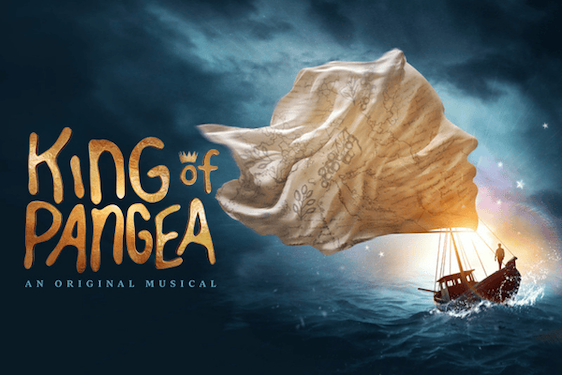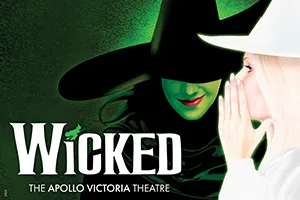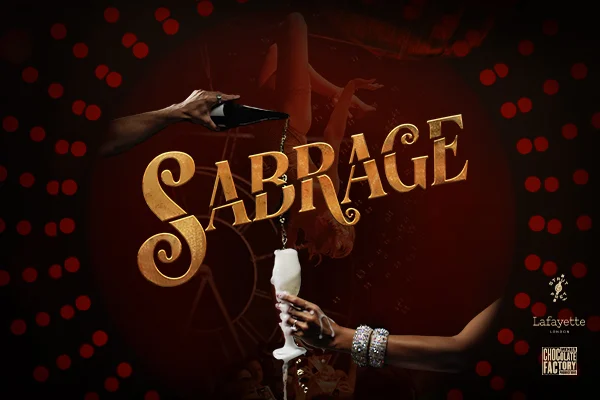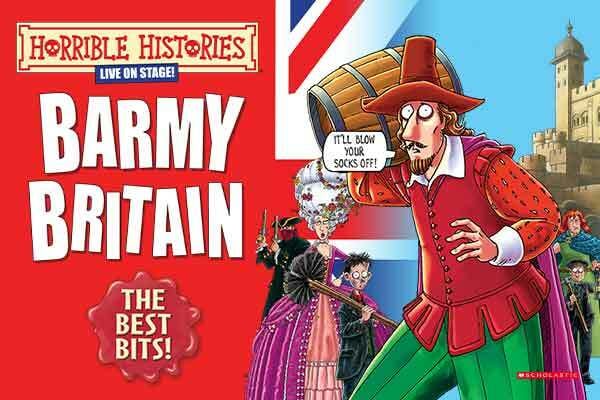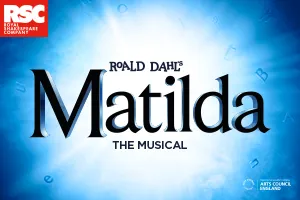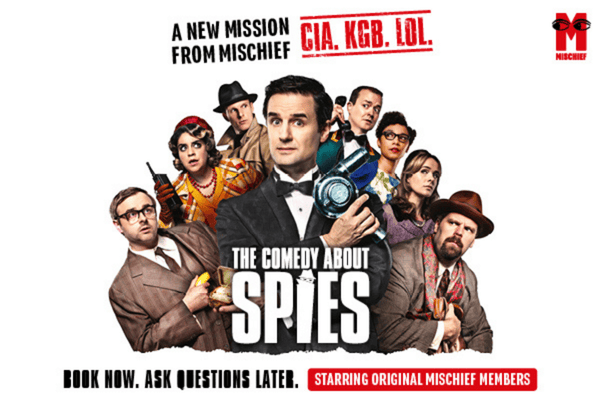Just leave your expectations – and comparisons – at the door.
It may be the misty metaphors of its Yorkshire moor setting. Or a wailing woman, wide-eyed and wearing white. Or a young, long-haired, extraordinarily hot Tom Hardy, lying in bed, wating…
Whatever your perspective, it highlights the fact that Wuthering Heights has meaning to most people, irrespective of literary knowledge. You probably know more about the story than you think. Besides, Director Emma Rice has made this adaptation of the 19th century classic a rare example of a production that is easily accessible, and can be enjoyed equally, by everyone.
Just leave your expectations – and comparisons – at the door.
Originating Heights
Despite its popularity today, when it was first published in 1847, the reception to the only novel by Emily Brontë (as Ellis Bell) was somewhat tepid. (There are several hypotheses for this which are well worth a google of your time). Before the decade was done, Emily, her brother and three of her sisters had all died.
As the only Brontë sibling remaining, one can imagine Charlotte wanted to stay busy. And alive. Perhaps this – along with her smokin’ hot reputation post Jane Eyre – led to her correcting typos, grammar, and plot holes in the original to publish a second edition in 1850.
The second chance certainly helped. By the turn of the century, the fickle finger of fortune had turned Emily’s way. Opinions changed and Wuthering Heights became – and remains – widely regarded as being the best of all the Brontë sisters’ novels. Including Jane Eyre.
“Ha. Screw you, Charlie B!” As Emily may have been thinking from beyond-the-grave.
Bothering Heights
Even with the book’s rising popularity, the complexity of the plot, with its interwoven, inter-familial relationships and excessive death toll, seemed to make it too bothersome to adapt. That didn’t stop people trying. Many, many people.
A quick recce counts at least 24 films, 8 television series, 3 operas, 4 plays and 2 musicals based on the possibly masochistic, quasi-love story. In addition, the novel, or its characters, are referenced in 27 literary works, 16 recorded songs, 30 TV shows and movies, 3 artworks and the computer game, Minecraft. Johnny Depp said it taught him about romance. Gordon Brown compared himself to its anti-hero Heathcliff.
With over 120 references made in popular media over the years, it sort of begs the question.
Why do we need another?
Maddening Heights
There’s no value in me explaining the plot here. But if we are to evaluate the production, we do need to look at its heart.
Though it’s often called a love story, it would be more accurate to say it is a story about love. Not love as longed-for romance. More lust as all-consuming vengeance.
The far-from-lovebirds in this far-from-love story would be fodder for tabloids. Headlines would call them Crazy Cathy and Hunky Heathcliff. Brontë omits details – possibly purposefully – that could help us fully understand the drivers of the characters’ fatal flaws, but it is clear more lies behind the headlines.
They are both addicts. They reject authority and rebel against societal norms. Damaged by their entry into this world, both defensively reject affection but demand attention. They strive to fit in whilst fighting to stand out.
Characterising Heights
As infants, Heathcliff and Catherine are played by puppets when they first meet. Catherine’s father finds Puppet Heathcliff at Liverpool docks and adopts him into his home. When Ash Hunter takes the role from the puppet, he gives his most-rounded Heathcliff. He carries himself as though wrapping the burden of his secret scars in the blanket of childhood dreams.
Hunter seems to become the older embittered Heathcliff – monied, cynical, angry – with little more than a change of costume. We know this change happens. But it might just have happened elsewhere. Hunter gives a strong, metered performance, with requisite broodiness and moodiness. It is much as we might expect. And little more.
Lucy McCormick’s Catherine screams on her first appearance. She then goes upwards. Her energy is a ball of fire that refuses to go out. She sparks flames where she treads. Her Catherine is rarely likeable. Depending on your viewpoint, she may be highly strung, a spoilt brat, or have ADHD. Even when she is onstage watching, you can feel her presence.
McCormick seems to be having an absolute blast. But this performance style is her bag. Using the name Lucy Muck, her website says she “makes nightclub interruptions, cabaret interventions and extravaganza theatre…marrying absurdity…and the grotesque.” I couldn’t describe her Catherine more fittingly.
Energising Heights
Energy abounds in all corners of this production. The 12 actors play over 20 roles, switching confidently and naturally from storytellers to the story’s players. They move time and change sets in front of us, without awkwardness.
It may seem that Designer Vicki “the Lyttleton Whisperer” Mortimer has provided little more than a revolving front door and two high-backed chairs. But these have been made intrinsic to the flow of the action, so we never question a change of location or disbelieve a passage of time created with the subtlest of alterations.
Sing-a-song-a-heights
Musicians sit upstage and underscore the action throughout. A number of times the music swells, and we get a proper, full-on, original (often rock) song. Some are delivered as script, following a “sing me that song you used to sing when…” type prompt. Others look in from the outside.
In a highlight McCormick goes full rock-chick, showing off the power of her voice, with a performance that is as beautiful as it is guttural. It ends with a mic drop and blackout. Cute.
It's less than a full-blown musical. It’s more than some songs added to a play. It’s a construct that shouldn’t work.
And I can’t tell you why, but it does. It really really does.
Storytelling Heights
The book tells the story in flashback from the perspective of the housekeeper, Nelly Dean. Here the role of narrator is even more pivotal.
Not every event can be played (if we ever want to go home) and it is the narrator who fills in the blanks by bullet-pointing key facts. They acknowledge the plot is “too confusing to understand”. They clarify each new death by writing the name of the deceased on a chalk board to be paraded like the start of a new Round in a wrestling match.
The narrator dances and sings to mark weeks or years passing. They harmonise with each other to….
Wait. Let me rewind. I may have omitted an important detail. Nelly Dean does not appear in Rice’s production. Instead, the narration is done by…. how do I put this without sounding all drama student?
Played by Nandi Bhebhe whose performance mesmerises throughout, the narrator is the singing, dancing, speaking, hat-made-out-of-branches-wearing, Yorkshire Moor. The Moor extends with up to nine other actors joining in the manner of a Greek Chorus, as and when required.
Everyone remembers the moor in Wuthering Heights. Now everyone who sees this will remember The Moor in Wuthering Heights.
Heights
Besides personifying foliage, there are many other elements that seem inspired by the Edinburgh Fringe Festival. Mainly harmless, but there is something a bit passe about actors breaking out of character, sitting on stools where the wings should be, or having the stage crew and lighting rigs in clear view.
That’s not to disparage the Edinburgh Festival. After all, we are Broadway Baby. That’s all the more reason why we feel like we have seen it all before. It’s just a bit How to Do Theatre – Chapter 6: Experimental.
One wonders whether the decision to give it a run at the National is recompense to Rice for that departure from The Globe.
Summarising Heights
That said, there’s a lot of fun in this tragedy. Yes, the second act loses some of the polished energy of the first. But it is much shorter. Plus it nicely ties up the loose ends so worth coming back from the interval.
It may not be Rice at her A-game, but it’s far from boring. Is it quite as unique as it may think? Does it strike the right balance between faithful retelling and accessible fun? I’m not sure on either point.
See it without expectations.
See it without questions.
See it without comparisons.
And no harm done.










